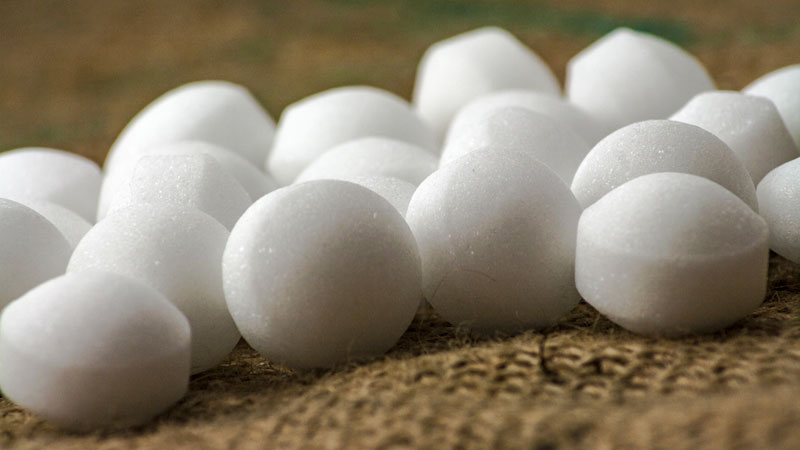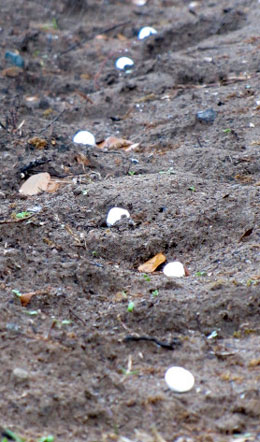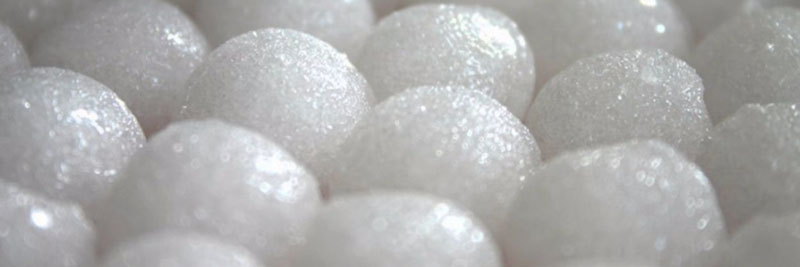There’s no question that mothball products have proven highly effective over the years. However, they’re classified as a pesticide for good reason. Let’s take a look at this potent product, what it does, and why it might not be the ultimate solution after all.
Popular Mothball Uses
You can find all sorts of tips online for using whole or crushed mothballs. However, most are highly illegal and could put yoru family and the environment in serious danger, as their toxic nature is rarely considered when suggesting “life hacks”. In addition, misuse of mothballs comes with serious legal woes.
Here are three of the most popular uses you’re likely to hear about, but we don’t recommend trying them. There’s a good reason mothballs bear the creed “the label is the law” in most states!
Corpse Odors

To make an odor control box that’s relatively safe, get a small cardboard box and put some balls in it. Then get a netted bag or large freezer bag (and poke some tiny holes in it) to stick the box in. Seal the bag and place it near the strongest point of the odor.
The bag will help reduce the risk of contamination from rain or moisture melting the box. Be sure to properly dispose of the box when the odor has dissipated.
See Also: How to Get Rid of a Dead Mouse Smell
Flea Killer
Adding some mothballs to the bag or canister of your vacuum cleaner will kill fleas, dust mites, and bed bugs on contact, if you suck some up while cleaning. Again, be careful when disposing of the contents.
Insect Repellent
Mothballs’ true claim to fame comes from their usage when storing clothes and other insect-prone items. It’s common for some families to store wedding dresses and other valuable clothing in mothballs to pass down from generation to generation, for example.
This method is so successful that “mothballing” has become a synonym for storage, leading to such common phrases as “The project was mothballed” and “taking it out of mothballs”.
Clothing stored in mothballs should always be washed prior to use to get rid of any residue. Additionally, it’s best to keep the balls in a netted bag or a box instead of placing directly on your clothing to help protect your family from accidental exposure.
While it’s technically possible to use mothballs to repel termites and other nasty critters, the risks are too great that safer options need to be used.
Read Also: What Do Baby Moths Look Like?
 Large Critter Deterrent
Large Critter Deterrent
It’s a popular, but illegal trick to bury mothballs to help deter larger pests such as chipmunks and prarie dogs from helping themselves to your garden. Dropping some into a burrow entrance can also be used to temporarily stop large critters from using that entrance for about a month.
Unfortunately, there’s no way to keep the chemicals from harming any beneficial or wanted critters that come into contact with it. Contaminated soil will continue killing critters for years. Even worse, chemical you won’t be able to consume any products grown near mothball-contaminated soils.
Therefore, be sure to only use this product indoors if fighting even large critters to avoid possible fines or worse.
Disadvantages of Using Mothballs
Most home remedies have side effects and mothballs are no exception. Understanding the downsides of using this product will help you choose those times when a different method should be used.
Environmental Risks
Mothballs are classified as pesticides and are an effective insecticide. Over time, they dissolve into a toxic gas. Using them outdoors will not only harm beneficial critters, but can easily contaminate plants, soil, and groundwater.
Related: Are Gypsy Moths Harmful?
Fire Risks
Mothballs use one of two active ingredients: naphthalene and para-Dichlorobenzene. These have several detrimental qualities including a high level of flammability. As a result, they should never be stored near flame or placed in a storage area that is prone to heat buildup.
Health Risks
Another issue with the active ingredients is that they are suspected carcinogens. The toxic nature of these ingredients means that over-exposure can lead to a multitude of symptoms, including:
- Abdominal pain
- Coughing
- Diarrhea
- Headache
- Hemolytic anemia (damage to red blood cells)
- Irritation to eyes and ears
- Vomiting
Mothballs leave behind a residue, requiring anything they come into contact with to be washed before use. Additionally, long-term exposure can cause damage to the liver and kidneys, and ingestion will seriously injure children and pets.
If you suspect a pet or child has come into contact with mothballs or inhaled the fumes, you should contact a poison emergency center immediately. Under no circumstances should you ever keep mothballs in an open container.
Smell
Mothballs don’t smell pretty, which is why they’re so effective. Unfortunately, if you can smell the mothballs, it means you’re inhaling toxic gasses. Initial exposure may smell sweet, but longer exposure will make the smell nauseating.
Unfortunately, the stench will often outlast the balls themselves, especially on clothing. There are a few good methods to get rid of the mothball smell, although they won’t work instantly.
Mothballs: Old vs New
As we mentioned earlier, mothballs commonly come in two varieties. Naphthalene mothballs were once the standard. However, it was discovered that naphthalene creates serious environmental risks. As a result, commercial products began phasing naphthalene out. Modern mothball formulations use the chemical 1,4-Dichlorobenzene (AKA paraDichlorobenzene).
ParaDichlorobenzene mothballs are less toxic, but they’re still quite dangerous. Seek medical advice immediately if you or your family are exposed to either type of mothballs to avoid serious injury.
However, there’s actually a third contender, sometimes referred to as “natural mothballs”. This formula uses camphor as the active ingredient. While a very popular wood and fragrance, camphor toxicity is very real, and ingestion of any sort can be dangerous or even deadly.
The ONLY Proper Use
Earlier, we mentioned a few popular “life hacks” involving mothballs. But not all household products are safe to use outside of their intended purpose. In fact, there’s only one way to use mothballs safely and legally: closed containers.
Mothballs are used to protect clothing against clothes moths (family Tineidae and most infamously Tineola bisselliella). Place your valued clothing in airtight containers with a few mothballs. This will prevent damage to clothes while in storage.
When taking a garment out of mothball storage, it needs to be thoroughly washed to get reid of any chemical residue. Remember to always wear a mask and gloves when handling mothballs.
Our Verdict and Recommended Alternatives to Mothballs
Here at RMC, we’re all about folk remedies that actually work. However, even camphor-scented mothballs are highly toxic and legal use of any mothball product is extremely limited. You also have to dispose of mothballs as you would other dangerous chemicals.
Considering the risks vs benefits, we can’t recommend ever using mothballs in good conscience. Thus, before you hit the aisle looking for boxes of mothballs, try these safer alternatives instead:
Cedar
Much like camphor, cedar is an exotic wood treasured for its amazing smell. While expensive as a building material, you can get cedar blocks at a reasonable cost. Place these in your dresser drawers or closet to safely repel a wide range of pests.
Essential Oils
Chances are, you’ve got at least one essential oil in your home. They’re amazing for aromatherapy and have a pretty good success rate as a pest repellent. Just be warned, some essential oils are toxic to pets if ingested, so always use any homemade essential oil sprays or products responsibly.
Herbs
Herbal potpourris are another excellent choice. These use dried herbs such as cloves, lavender, mint and sage wrapped in a cloth or plastic satchel. Simply make or purchase a satchel and hang it in your closet or put it in a dresser drawer or storage box for wonderful results.

- How to Get Rid of Hawks - March 8, 2024
- How to Get Rid of Pill Bugs (Rolly Pollies) - March 1, 2024
- How to Get Rid of Groundhogs (Woodchucks) - February 5, 2024


 Large Critter Deterrent
Large Critter Deterrent
Will mothballs kill mosquito larvae in standing water?
While it might work, the toxins present in mothballs would make this idea more dangerous than the mosquitoes themselves. A better option if you can’t get rid of the standing water would be to add vinegar or a similar plant-based product that won’t harm surrounding plants or release any dangerous fumes.
bti. You can get it in granualar form, or in large tablets for something swimming pool sized
Thank you very much for the information. Since they heat treated apartment #504 in the apartment complex, more than a trillion bed bugs have escaped with out being killed and my apartment has been invaded worse than ever before in my life time. I would love to be able to rid my entire home city of these damned bed bugs.
I want to prevent critters from eating my tulips and was told to use mothballs; then I came across your article. So what is your recommendation for keeping the deer out of my garden and yard? So far I have not found anything that works.
Thanks in advance for your help!
This should help: https://www.ridmycritters.com/how-to-get-rid-of-deer/